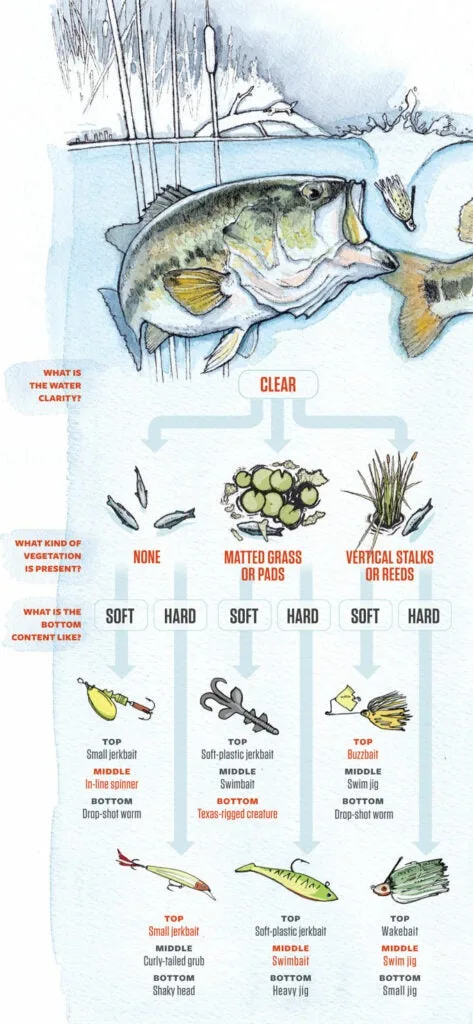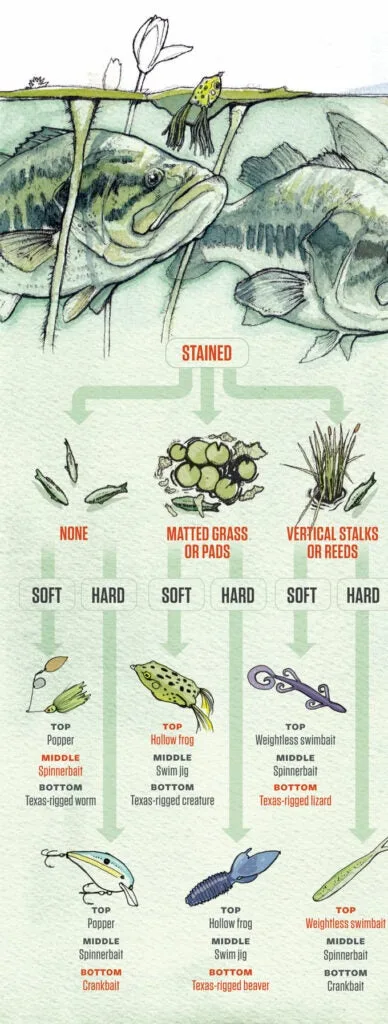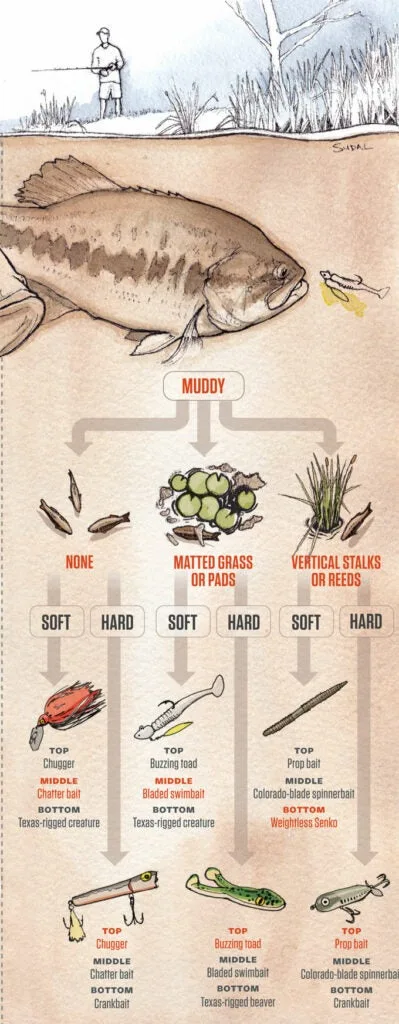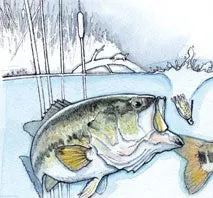
bassopener
Catch bass in any pond by selecting the right lure for all possible conditions.
Like any bass angler, I love tearing across a vast reservoir in a bass boat, but I probably spend twice as much time fishing for largemouth bass in farm ponds
and small community lakes. I can’t help it. Dissecting a shallow pond from corner to corner is my summertime addiction, and over the years I’ve boiled down a system in which I can pick the best lure for bass fishing, no matter the conditions on these small waters.
The game starts with carrying three rods, which eliminates the need to frequently tie on a new lure
or bait. Next, use three simple factors: water clarity, vegetation, and bottom content, along with the illustrations below, to choose the best lures for bass
near the surface
, in the middle of the water column, and near the bottom.
How to Fish for Bass in Clear Water Ponds

clearwater
Ideal lures for bass fishing in clear water.
Why These Lures Catch Big Bass on the Surface
Subtle presentations like a soft plastic curly-tail grub, or a natural-colored soft plastic jerkbait are ideal for ponds with clear water. More aggressive patterns and colors run the risk of spooking fish that can see so well, while soft plastics entice fish to strike without suspicion.
Read Next: Bass Fishing Tips on How to Catch a 10-Pound Largemouth
Since clear water makes it easier for fish to find their prey, more aggressive baits, like the buzzbait or small jerkbait, get fish to strike even when they’re not cruising for a meal. These baits also help you cover a lot of water quickly, so you can target more fish and increase your odds.
How to Catch Bass in Stained Water

stained
Fish these lures when the water becomes stained to find a big bass.
Why These Lures Catch Largemouth Bass in Stained Water
In water with a little less clarity, bass will start to orient tighter to structure so they can ambush cruising prey. Using a spinnerbait, crankbait, or weightless swimbait helps to cover a lot more water along these ambush lines. The weightless swimbait especially creates an ideal target for a waiting bass, as the bait will stay longer in the strike zone any time you pause your retrieve.
Stained water, especially near the top, still lets in light from the sun. Bass use this sunlight when they start looking up to judge the size of potential prey at the surface. Throwing a chunky frog or creature bait like the Texas-rigged beaver throws off a larger silhouette, which will be hard for a giant largemouth bass to pass up in stained water.
How to Catch Bass in Muddy Water

muddy
When the water turns to chocolate milk, these lures attract bass from across a larger distance.
Why These Lures Catch Big Bass
You can’t see your lures through muddy water, and neither can a bass. What they do notice however, is vibration and movement. Chatterbaits, chuggers, bladed swimbaits, and spinnerbaits with Colorado blades all create a louder thump of vibration. This effect triggers the lateral line of a largemouth bass and helps the fish zero-in on your lure. Bass use this extra sense to hunt in especially muddy conditions, so these baits help you give bass a meal for which they’re already searching.
The weightless Senko worm, even though it doesn’t create the loud thump-thump vibration of a spinnerbait, is still effective in muddy water because of its action. Bass will cruise muddy water, especially the edges where muddy water meets clearer water, and look to ambush prey. As your Senko worm falls slowly it achieves more time in the strike zone of a cruising fish. Once a fish comes up on your bait, they’ll strike without thinking twice.





